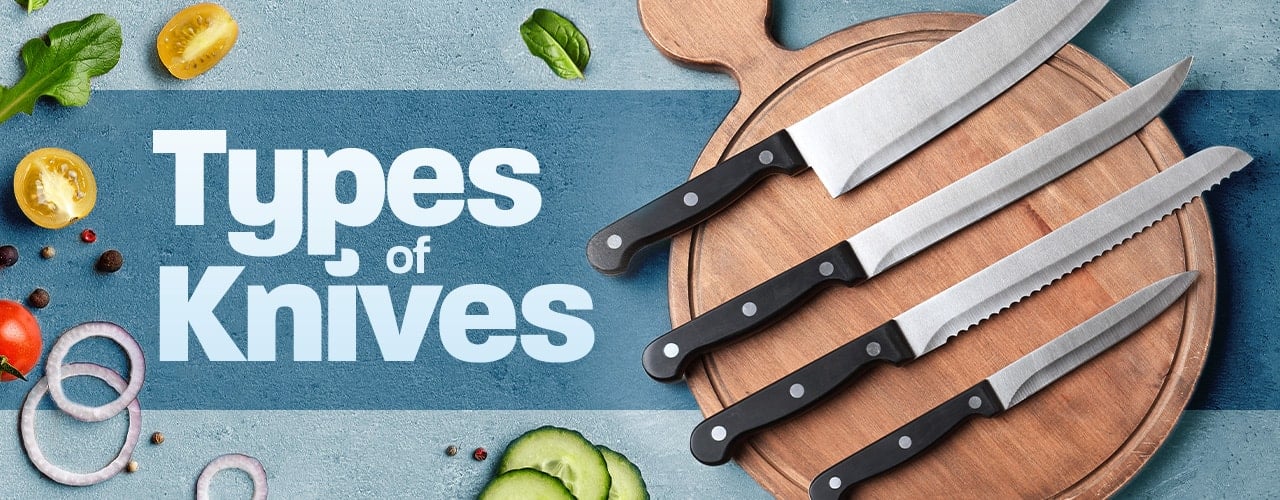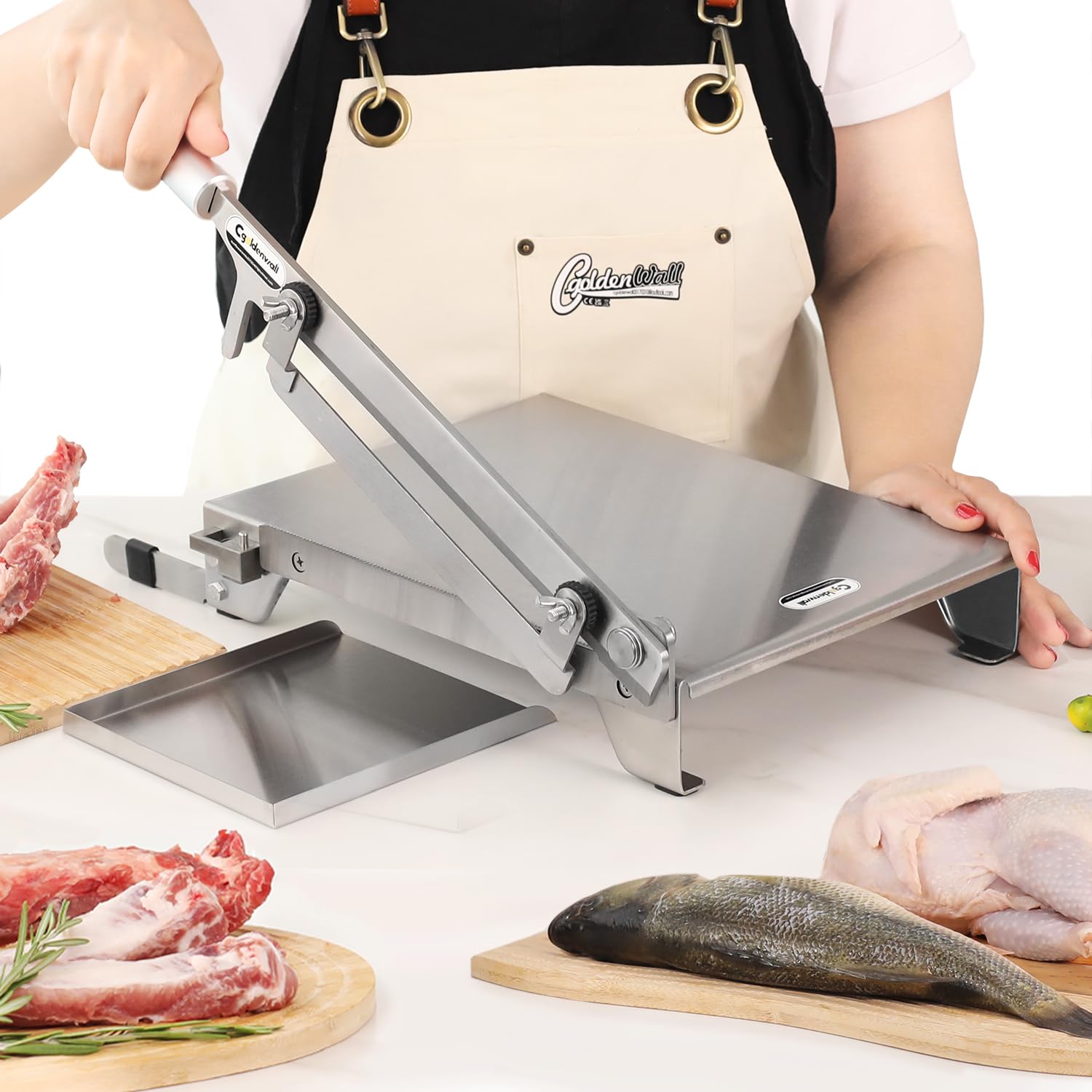Unleash the Power of a Meat Slicer: Can It Cut Through Bone?
Ever wondered if a meat slicer can cut through bone? The answer is a resounding yes! This versatile kitchen tool is not only powerful but also precise, capable of handling various types of meat, including bone-in cuts.
Equipped with a sharp blade and a robust motor, a meat slicer can slice through bone effortlessly, providing you with perfectly portioned cuts of meat for your recipes. Whether it’s a bone-in ham, steak, or any other meat with bones, a meat slicer can slice through them with ease, saving you time and effort in the kitchen.
Moreover, it ensures consistent and uniform slices, making it an invaluable addition to any restaurant, butcher shop, or home kitchen.

Credit: www.webstaurantstore.com
Unveiling the Versatility of Meat Slicers
Meat slicers have been a mainstay in professional kitchens and delis for years, offering a quick and efficient way to slice through various types of meats. But did you know that these versatile machines can do more than just their traditional job? In this article, we will delve into the different facets of meat slicers, including their history and evolution, to reveal their true potential.
The Journey of Meat Slicers
The journey of meat slicers began in the late 19th century when they were first introduced to streamline the slicing process. Initially, these machines were manually operated, requiring significant effort to achieve consistent slices. However, with the advent of technology, electric meat slicers were developed, revolutionizing the industry.
The Evolution of Meat Slicer Technology
The evolution of meat slicers is evident in their design, functionality, and safety features. Modern meat slicers are equipped with sharper blades made from high-quality materials, ensuring precise and efficient slicing. The inclusion of adjustable thickness settings allows for customized slicing, catering to different preferences and culinary needs.
Furthermore, manufacturers have introduced additional safety features to ensure user protection. For instance, newer models come with safety locks and guards to prevent accidents and injuries. These advancements have made meat slicers more convenient and user-friendly, eliminating the need for manual dexterity and reducing the risk of accidents.
Moreover, the versatility of meat slicers extends beyond just slicing meat. These machines can also handle other foods, such as cheeses, fruits, and vegetables. By adjusting the slicing thickness and using the appropriate blade, meat slicers can effortlessly slice a wide range of ingredients, providing not only efficient but also consistent results.
Conclusion
From their humble beginnings to the advanced electric models we see today, meat slicers have come a long way. The history and evolution of these machines showcase their versatility and adaptability to different culinary needs. Whether you’re slicing meat, cheeses, or even produce, a meat slicer can be a valuable tool in any kitchen, providing efficiency, precision, and convenience.
Decoding the Anatomy and Functionality of a Meat Slicer
When it comes to slicing meat efficiently and effectively, a reliable and high-quality meat slicer is an invaluable tool in any kitchen or deli. But have you ever wondered about the inner workings of this seemingly simple kitchen appliance? In this section, we will explore the anatomy and functionality of a meat slicer, shedding light on its key components and how it operates to deliver those precise and uniform slices of meat.
Components of a Meat Slicer
A meat slicer consists of several key components that work together to deliver the perfect slice. Understanding these components is crucial for ensuring its optimal performance and longevity.
- Blade: The blade, often made of stainless steel, is the heart of the meat slicer. It is responsible for cutting through the meat efficiently and precisely. The blade can be sharpened, ensuring consistent slicing performance over time.
- Motor: The motor powers the blade and determines the speed and force at which it cuts through the meat. A powerful motor ensures smooth slicing even through tougher cuts of meat.
- Carriage: The carriage is where the meat is placed for slicing. It glides back and forth on a track, allowing for controlled movement of the meat and ensuring accurate slicing.
- Thickness control: Most meat slicers have a thickness control knob or dial that allows you to adjust the thickness of the slices. This feature gives you the flexibility to achieve the desired thickness for different recipes and preferences.
- Safety features: Meat slicers often come equipped with safety features such as a blade guard and a locking mechanism. These features help prevent accidents and injuries, ensuring safe operation.
- Food chute and tray: The food chute is where the meat is inserted for slicing, and the tray catches the sliced meat as it falls. These components work together to provide a smooth and efficient slicing process.
How a Meat Slicer Works
A meat slicer operates by combining the rotation of the blade with the movement of the carriage and the adjustment of the thickness control. Here’s a step-by-step breakdown of how it works:
- Preparation: Place the meat on the food chute, ensuring it is securely positioned. Adjust the thickness control to the desired setting.
- Power on: Turn on the meat slicer and let the blade reach its operating speed. Ensure that the meat is not touching the blade at this point.
- Slicing: Push the carriage towards the blade, allowing it to slice through the meat. The movement of the carriage can be controlled using a handle or a button, depending on the model.
- Adjustment: If needed, you can adjust the thickness control during the slicing process to achieve the desired thickness for each slice.
- Catching sliced meat: As the meat is sliced, it will fall onto the tray positioned below the blade. Make sure to have a clean and empty tray to catch the sliced meat.
- Cleaning and maintenance: After use, it is important to clean the meat slicer thoroughly and maintain it according to the manufacturer’s instructions to ensure its longevity and safe operation.
Now that you have a better understanding of the anatomy and functionality of a meat slicer, you can appreciate the engineering behind this essential kitchen tool. Whether you’re a professional chef or a home cook, a meat slicer can revolutionize your slicing experience, saving you time and effort while delivering those perfect slices of meat.
Selecting the Perfect Meat Slicer for Your Needs
When it comes to achieving perfect slices of meat, a high-quality meat slicer can make all the difference. Whether you’re a professional chef or a home cook looking to up your cooking game, choosing the right meat slicer is crucial for achieving the desired results. With so many options available in the market, it can be overwhelming to find the perfect meat slicer for your needs. In this article, we will discuss the factors to consider when purchasing a meat slicer, the types of meat slicers available, and budget-friendly options for home use.
Factors to Consider When Purchasing a Meat Slicer
Purchasing a meat slicer is a long-term investment, so it’s important to consider various factors before making a decision. Here are some key factors to keep in mind:
- Blade Size: The size of the blade will determine the thickness of the slices. For thicker cuts, a larger blade size is preferable.
- Power and Speed: A powerful motor with adjustable speed settings will ensure smooth and efficient slicing.
- Slicer Construction: Look for a meat slicer with a sturdy construction and durable materials to ensure longevity.
- Safety Features: Safety should be a top priority when using a meat slicer. Look for features like a blade guard and food holder to prevent accidents.
- Easy to Clean: Opt for a meat slicer that is easy to disassemble and clean, as proper hygiene is essential in the kitchen.
Types of Meat Slicers Available in the Market
Meat slicers come in various types to cater to different needs. Here are some popular types:
| Type | Description |
|---|---|
| Manual Meat Slicer | A manual meat slicer requires physical effort to operate and is suitable for light-duty slicing. |
| Semi-Automatic Meat Slicer | A semi-automatic meat slicer offers a combination of manual and automatic slicing, making it ideal for moderate use. |
| Automatic Meat Slicer | An automatic meat slicer is the most advanced option, capable of handling high-volume slicing tasks effortlessly. |
Budget-Friendly Options for Home Use
If you’re a home cook looking for a meat slicer that fits your budget, there are options available that offer great value for money without compromising on quality.
- Entry-Level Electric Meat Slicers: These budget-friendly options are ideal for occasional home use and can handle basic slicing tasks.
- Compact Meat Slicers: If you have limited kitchen space, a compact meat slicer is a great choice. These slicers offer convenience without taking up much countertop space.
- Manual Deli Slicers: For those on a tight budget, a manual deli slicer can be a cost-effective option. While they require more effort to operate, they can still produce excellent results.
By considering these factors and exploring the different types of meat slicers available in the market, you can find the perfect slicer for your needs without breaking the bank. Remember to prioritize safety, durability, and ease of use when making your decision. With the right meat slicer in hand, you’ll be able to prepare delicious slices of meat with precision and ease.
Recognizing the Limitations of a Meat Slicer
While a meat slicer is an invaluable tool for slicing meat and other deli products, it’s important to understand its limitations, especially when it comes to cutting through bone. In this section, we will explore what a meat slicer is not designed for and the safety precautions to consider when using one.
What a Meat Slicer Is Not Designed For
Although a meat slicer is designed to simplify and streamline the process of slicing various types of meat, it is not designed to cut through bone. The blades of a meat slicer are designed to slice through tender cuts of meat, such as roast beef, ham, or turkey, with ease. Attempting to cut through bone with a meat slicer can not only damage the machine but also pose a safety risk.
Using a meat slicer to cut through bone can cause the blade to become dull quickly and could potentially result in severe damage or injury. The force required to cut through bone is too much for the delicate blades of a meat slicer to handle. It is crucial to use the appropriate tools, such as a butcher’s saw or cleaver, when dealing with bone-in cuts of meat.
Safety Precautions When Using a Meat Slicer
Using a meat slicer requires proper knowledge and adherence to safety precautions in order to prevent accidents and injuries. Here are some important safety measures to keep in mind:
- Always ensure the meat slicer is placed on a stable surface and securely fastened before use.
- Before slicing meat, make sure the blade is sharp and properly aligned. Dull blades can cause the meat to tear, leading to inconsistent slices and potential safety hazards.
- Wear a cut-resistant glove when operating a meat slicer to protect your hands from accidental cuts.
- When cleaning the meat slicer, always unplug it to avoid accidental activation and use caution when handling the sharp blade.
- Follow the manufacturer’s instructions for proper cleaning, maintenance, and storage of the meat slicer.
By understanding the limitations of a meat slicer and following these safety precautions, you can ensure efficient and safe operation. Remember, when it comes to cutting through bone, always use the right tools for the job to avoid any accidents or damage to your meat slicer.
The Power of Modern Meat Slicers: Can They Cut Through Bone?
When it comes to slicing meat, a common question that arises is whether a meat slicer can cut through bone. This is an important consideration for butchers, deli owners, and anyone who wants to prepare their own fresh cuts of meat at home. In this blog post, we will explore the power of modern meat slicers and dive into the advancements that have made it easier to slice through bone with precision and efficiency.
How Meat Slicers Have Improved Over Time
Meat slicers have come a long way from their early, more limited counterparts. Advances in technology have led to the development of more powerful and versatile slicers that can handle a variety of tasks, including cutting through bone. In the past, slicing bone-in meats required significant physical effort and the use of specialized tools. However, modern meat slicers are designed to handle this task with ease, making it possible to slice through bone with precision and efficiency.
– Risk of damaging the knife
Ultimately, the best method for cutting through bone will depend on your specific needs, skills, and available tools. Whether you choose to use a meat slicer or an alternative method, always remember to prioritize safety and follow proper techniques to ensure the best results.
Conclusion
So, can a meat slicer cut through bone? The answer is yes, but it depends on the specific model and its features. Advanced meat slicers with robust motors and high-speed blades can handle this task with relative ease. However, it’s important to refer to the manufacturer’s guidelines and ensure the slicer is designed for bone processing.
On the other hand, if you don’t have a meat slicer, there are alternative methods such as using a cleaver, hacksaw, or a chef’s knife and hammer. Each method has its own pros and cons, and the best choice will depend on your specific needs and skills.
Regardless of the method you choose, always prioritize safety and follow proper techniques. With the right tools and techniques, cutting through bone can be a manageable task, allowing you to prepare a variety of bone-in cuts with ease.
Whether you’re a professional chef, a butcher, or a home cook, understanding the capabilities of a meat slicer and exploring alternative methods for cutting through bone can enhance your culinary skills and broaden your cooking horizons. So, don’t be afraid to experiment and find the method that works best for you. Happy slicing!
Unveiling the Power of a Meat Slicer: Can It Cut Through Bone?
When it comes to kitchen essentials, a meat slicer is a tool that often sparks curiosity. Its power and precision are undeniable, but can it cut through bone? Let’s delve into the capabilities of this kitchen powerhouse and discover what it can and cannot do.
Before we proceed, it’s important to note that the method you choose for cutting through bone in the kitchen will largely depend on your personal preference and the tools you have at your disposal. Regardless of the method you choose, it’s crucial to handle the task with care and attention to ensure the desired results.
Common Queries About Meat Slicers and Bone Cutting
Let’s address some of the most frequently asked questions about meat slicers and their ability to cut through bone.
Is it Possible to Cut Ham Bone on a Meat Slicer?
Yes, it is possible to cut ham bone on a meat slicer, but it requires a careful approach. The bone should be small and thin, and the slicer should be handled with precision to avoid any mishaps.
What Can a Meat Slicer Cut?
A meat slicer is a versatile tool that can cut a variety of meats into thin, uniform slices. This includes beef, chicken, turkey, and even fish. It’s perfect for easy cooking and serving, making it a valuable addition to any kitchen.
What Blade Can Cut Through Bone?
When it comes to cutting through bone, a bone saw blade is the best tool for the job. Its strength and precision make it ideal for this task. However, it’s important to remember that using a bone saw requires skill and caution to avoid injury.
What Do Butchers Use to Cut Bone?
Professional butchers typically use bone saws to cut through bone. These tools are designed specifically for this purpose and can handle the task with ease and precision.
Final Thoughts
While a meat slicer is a powerful and versatile tool, it is not designed to cut through bone. It may be tempting to try and save time by using a meat slicer for bone-in cuts, but it’s crucial to prioritize safety and proper equipment usage. Attempting to cut through bone with a meat slicer can damage the machine, cause injury to the operator, and result in a poor quality cut.
Instead, it’s recommended to use specialized tools like a butcher’s bone saw or cleaver for bone-in cuts. These tools are specifically designed to make clean and precise cuts through bone, ensuring both safety and the desired outcome. By using the right tools for the job, you can achieve the best results in your kitchen and enjoy delicious meals with ease.
Remember, safety should always be your top priority when handling any type of cutting equipment. Always follow the proper guidelines and take the necessary precautions to ensure a safe and successful cooking experience.
So, while a meat slicer may not be the best tool for cutting through bone, it’s an invaluable asset for slicing a variety of meats with precision and ease. Whether you’re a professional chef or a home cook, a meat slicer can significantly enhance your culinary endeavors.

